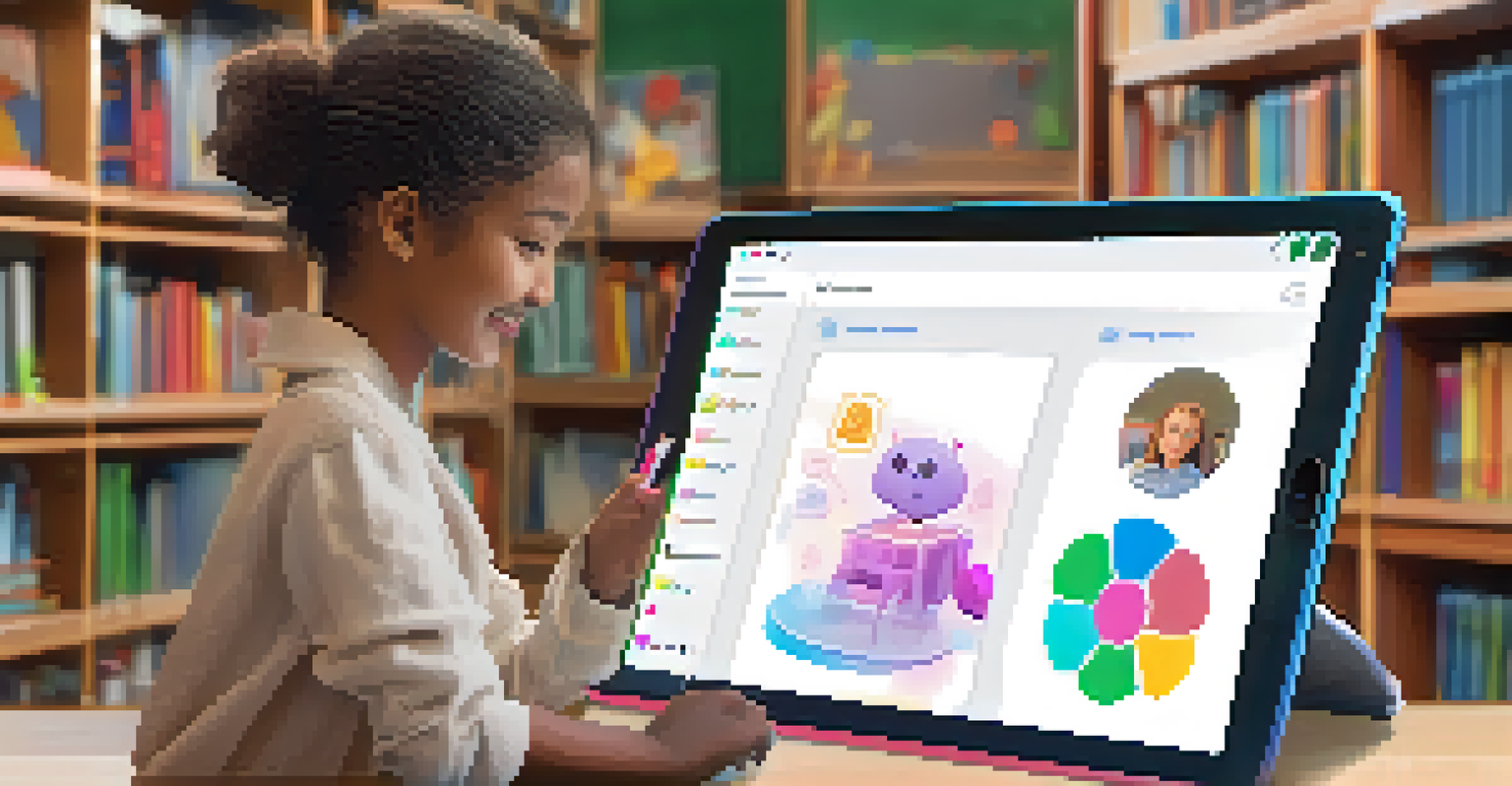AI Tools for Teachers: Automating Administrative Tasks

Understanding AI's Role in Education Administration
Artificial Intelligence (AI) is transforming various sectors, and education is no exception. Teachers often juggle multiple responsibilities, from lesson planning to grading. AI tools can help lighten this load by automating routine administrative tasks, allowing educators to focus more on teaching and student engagement.
Artificial Intelligence is not a threat to teachers; it's a tool that empowers them to do what they do best: teach.
For instance, AI can handle scheduling, manage student records, and even communicate with parents, streamlining many otherwise tedious processes. This technology doesn't replace teachers; rather, it acts as a supportive assistant, enabling them to dedicate more time to what truly matters—their students.
As we explore specific AI tools, it's essential to recognize how they can enhance efficiency without sacrificing the quality of education. With the right tools in place, teachers can reclaim valuable time and enhance their overall effectiveness.
Automating Grading with AI-Powered Solutions
Grading can often feel like an endless task for teachers, especially with large classes. AI-powered grading tools can take this burden off teachers' shoulders by automating the assessment of quizzes and assignments. These tools use machine learning algorithms to evaluate student submissions, providing instant feedback.

For example, platforms like Gradescope allow teachers to upload assignments and receive grades in mere minutes, rather than hours. This not only speeds up the grading process but also helps maintain consistency and fairness across evaluations.
AI Streamlines Administrative Tasks
AI tools automate routine tasks like scheduling and grading, allowing teachers to focus more on student engagement.
By automating grading, teachers can spend more time on personalized instruction rather than administrative tasks. This shift not only improves efficiency but also enhances the learning experience for students.
Streamlining Communication with AI Chatbots
Communication is key in education, but managing it can be overwhelming. AI chatbots can facilitate smooth communication between teachers, students, and parents. They can answer frequently asked questions, provide updates, and even schedule appointments, freeing up teachers from repetitive inquiries.
The future of education is not about technology; it's about how we use technology to improve learning experiences.
Imagine a chatbot that can remind students about upcoming deadlines or answer parents' questions about school policies. Tools like ChatGPT can be programmed to handle these interactions, ensuring that everyone stays informed without burdening teachers.
By leveraging AI for communication, educators can foster a more connected and informed community, ultimately leading to better student outcomes.
Enhancing Lesson Planning with AI Tools
Creating engaging lesson plans can be time-consuming, but AI tools can simplify this process. Platforms like Scribe and LessonBuddy offer resources and templates that help teachers design effective lessons tailored to their students' needs. By analyzing curriculum standards and learning objectives, these tools provide personalized suggestions.
For instance, a teacher may input the topic they want to cover, and the AI suggests relevant activities, resources, and assessment methods. This not only saves time but also sparks creativity, allowing teachers to explore new teaching strategies.
Personalized Feedback with AI
AI platforms analyze student data to provide tailored feedback, enhancing individual learning experiences.
With AI's assistance, lesson planning becomes less of a chore and more of an opportunity for innovation, ultimately enriching the classroom experience.
Using AI for Personalized Student Feedback
Personalized feedback is crucial for student growth, but providing it can be challenging with limited time. AI tools can analyze student performance data and generate tailored feedback for each learner. This approach ensures that every student receives the attention they need to succeed.
For example, some AI platforms can track individual progress and highlight areas for improvement, enabling teachers to offer specific guidance. This targeted feedback can motivate students to take ownership of their learning journey.
By utilizing AI for personalized feedback, educators can enhance student engagement and foster a growth mindset in their classrooms.
Data Analysis Made Easy with AI Analytics Tools
Understanding student performance trends is essential for effective teaching. AI analytics tools can sift through vast amounts of data to provide insights into student behavior, attendance, and performance. This information helps teachers make informed decisions about their instructional strategies.
For instance, platforms like Tableau allow educators to visualize data trends, making it easier to identify which students may need additional support. By pinpointing areas of concern, teachers can implement interventions before issues escalate.
Enhanced Communication via AI Chatbots
AI chatbots improve communication by handling repetitive inquiries, keeping students and parents informed effortlessly.
With AI-driven analytics, teachers can take a proactive approach to education, ensuring that every student receives the guidance they need to thrive.
AI Tools for Time Management and Scheduling
Time management is critical for teachers, who often find themselves stretched thin. AI scheduling tools can help streamline this process by automatically organizing appointments, meetings, and reminders. For example, tools like Calendly allow teachers to set their availability, making it easier for students and parents to book time.
Imagine eliminating the back-and-forth emails to find a suitable meeting time—AI takes care of that for you! This not only saves time but also reduces stress, allowing teachers to focus on their core responsibilities.

By leveraging AI for scheduling, teachers can enjoy a more organized day, making room for lesson planning, student interaction, and personal time.
The Future of Teaching with AI Integration
As AI continues to evolve, its integration into education is likely to expand. The tools discussed are just the beginning of a technological revolution that can reshape the teaching landscape. By automating administrative tasks, AI allows educators to focus on what they do best—teaching and nurturing students.
Looking ahead, we can expect even more innovative tools that enhance collaboration, foster creativity, and support personalized learning experiences. Teachers who embrace these technologies will be better equipped to adapt to the changing educational environment.
Ultimately, the future of teaching with AI integration promises a more efficient, engaging, and supportive experience for both educators and students alike.